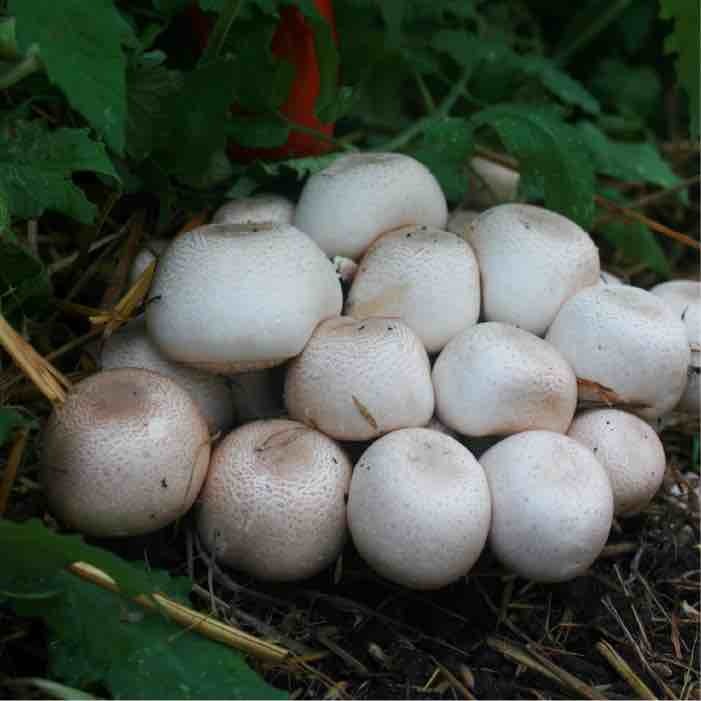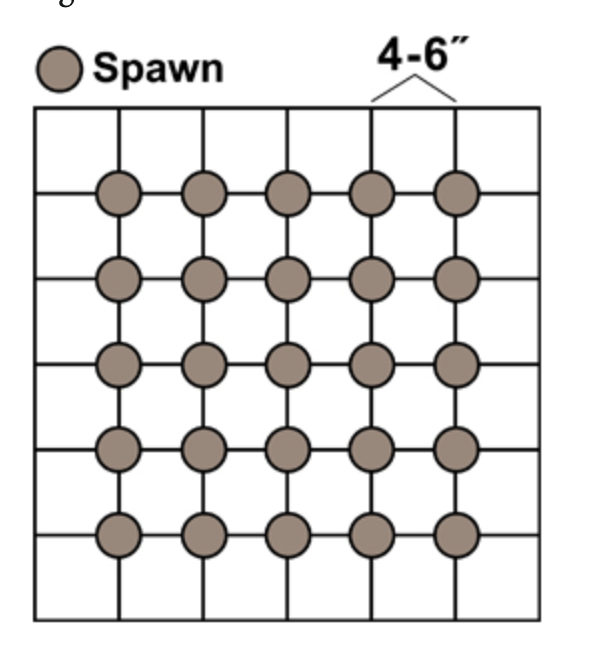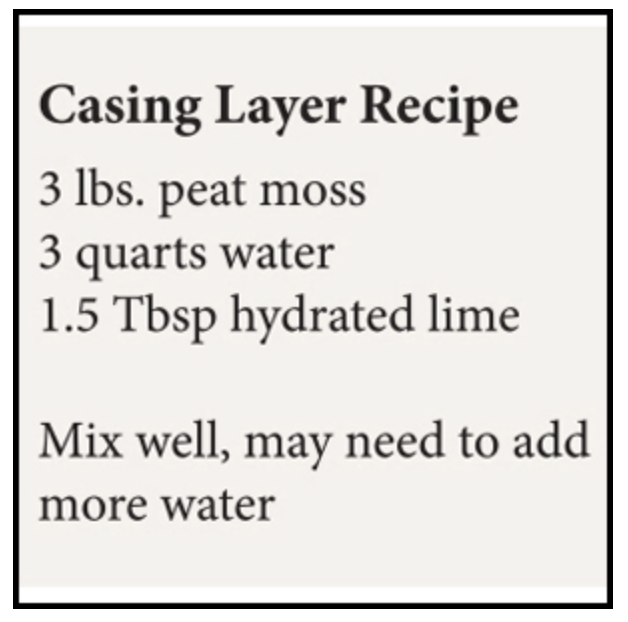
The Almond Agaricus (or Almond Portobello) is a tropical mushroom that is a single season producer grown on a wide variety of composts. It can be incredibly fast and prolific resulting in large clusters with individuals growing to over 1 lb. sometimes as early as 4 weeks after planting. It thrives in hot environments, but like every other mushroom, it requires high humidity which often means regular watering, especially if you plant this beauty in a greenhouse. Its tropical nature means it is cold sensitive and will only produce as long as temperatures stay above 40°F. Fruiting success is directly correlated to maintaining the moisture content of the compost bed, so be sure to water when necessary. Follow the six steps below for planting your Almond Portobello.
Planting your Almond Agaricus
1. Prepare the compost
Compost should be fully finished (so you can't tell what the starting material was). A variety of plant and manure-based composts work great, even store purchased varieties. Compost should be maintained between 60-70% moisture content. Grab a handful of compost and squeeze it. When you open your hand, it should stick together in a clump and you should see water on your hand. Several drops of water may squeeze out - that is okay, but you don't want it excessively wet. It is important that composts made with animal manure be fully composted prior to use!
2. Select a bed location
The Almond Agaricus's tropical nature means it thrives in the heat. It can be grown in a greenhouse, hoop house, high tunnel, poly tunnel, or even in a simple bed outdoors. It is one of the bed grown mushrooms that is an excellent candidate for polyculturing and can be grown underneath a plethora of plants. We grow ours under tomato plants in the greenhouse - the plants thrive off the added nutrients from the compost layer and provide the shade to maintain mushroom bed moisture. Keep in mind, maintaining moisture is critical, so provide shade or be prepared to water.
3. Plant the bed
Lay down the compost in a bed that is 3-6˝ deep. Thinner beds are more susceptible to drying out and will require more water maintenance. Open the bag of Almond sawdust spawn and break off large (golf ball-sized) chunks of spawn. Bury chunks of spawn at least an inch down into the compost bed in a grid pattern about 4-6˝ apart from one another across the bed following the diagram below.

4. Maintaining and monitoring the bed during colonization
Maintaining moisture is the most critical factor for success. Outdoor beds may receive enough rainfall, but beds planted in grow structures may need to be watered as frequently as every other day if conditions are exceptionally hot and dry. A top layer of mulch or covering the bed with cardboard during colonization can really reduce the need to water. The top layer of compost may appear dry, but below the surface, it should remain damp. Within 3-6 weeks after planting, you should be able to see white mycelium cover the surface of the compost bed. At this point, you may wish to add an optional layer of casing to the top of your bed (Step 5).
5. Add a casing layer (optional)
Although not necessary, a casing layer can provide added humidity protection for developing mushrooms. The casing layer recipe is 3 lbs. peat moss, 3 quarts water and 1.5 tablespoons of hydrated lime. Mix together and do the squeeze test for moisture content. It should be wet (releasing about 10 drops of water when squeezed). Add water if necessary, then apply loosely to the surface of your Almond bed in a thin ½-1˝ layer. Tip: dissolve lime in water first.

6. Mushroom harvest
Watch for fruiting as soon as four weeks after planting your bed as mushroom development happens quickly. We recommend picking them when the veil is mostly intact and refrigerating until use. Older mushrooms develop dark spores which are harmless but can darken ingredients in your prepared dish.
